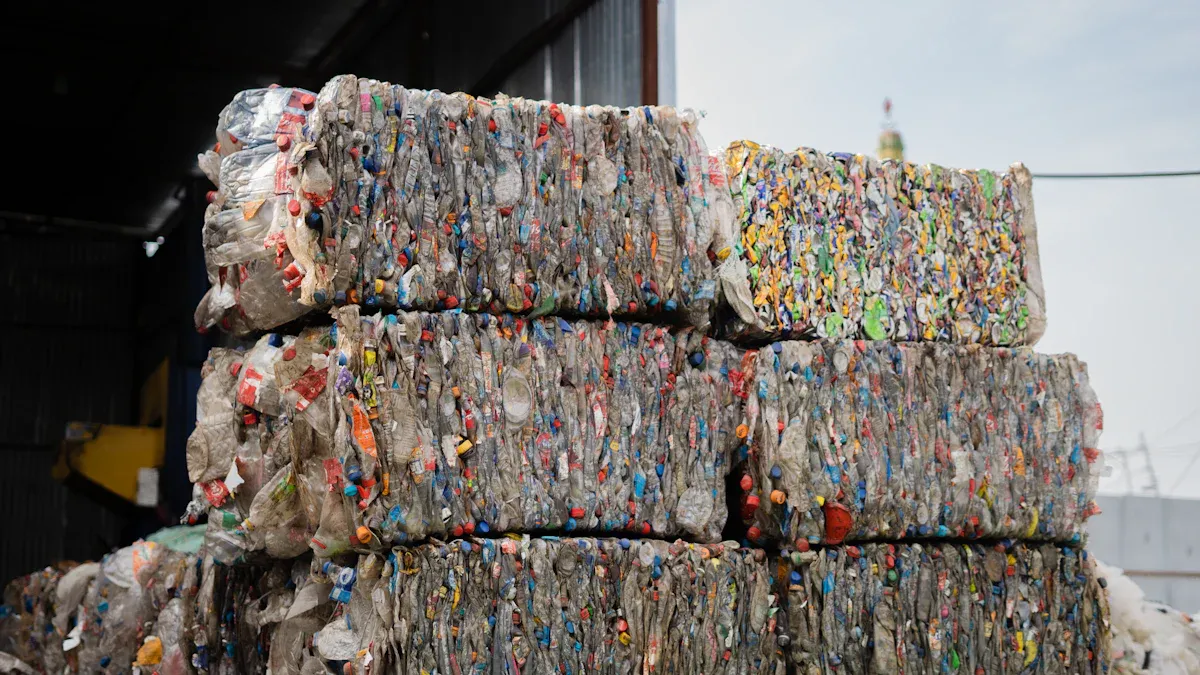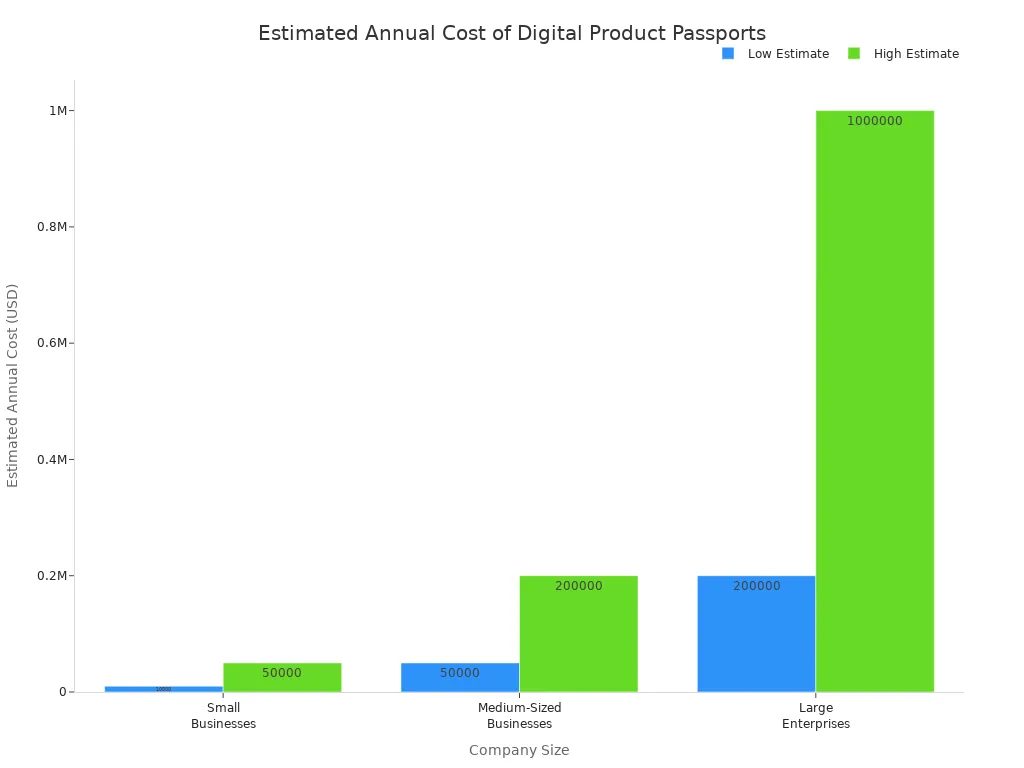
Digital product passports are changing the fashion industry. They create transparent and sustainable garment lifecycles. These passports provide verifiable data on a garment's origin, materials, and care instructions. This information helps people make informed choices. It also supports circular practices like repair and resale. The push for greater transparency and sustainability meets a clear consumer demand for verification.
A 2023 survey by Fashion Revolution found that 87% of consumers want brands to share their supply chain information.
Understanding the DPP in fashion

Digital product passports are transforming how we see our clothes. They provide a complete story for each garment, making the fashion industry more transparent.
What is a digital product passport?
A digital product passport is a dynamic digital record of a single garment. It tracks the item from its creation to its end of life. This passport holds detailed information that brands collect throughout the supply chain. Key data points often include:
- Raw material details, including origin and certifications.
- Manufacturing processes and factory locations.
- Environmental impacts like water usage and CO2 emissions.
- Social compliance data, such as labor conditions.
- Instructions for proper care, repair, and recycling.
This collection of data gives every item a unique identity and a verifiable history.
How it works: From factory to closet
Brands link a physical garment to its digital record using a unique identifier. This is usually a QR code or a Near Field Communication (NFC) chip sewn into the clothing. Consumers can simply scan the code or tap the chip with their smartphone. This action instantly opens the garment's passport.
Data collection happens at every step of the supply chain. A dpp platform gathers information from material suppliers, factories, and logistics partners. This process requires strong verification to ensure accuracy. Brands use methods like supplier audits and third-party verification to confirm the data. Some even use blockchain technology to create a secure and unchangeable record. This ensures the information consumers see is trustworthy and accurate.
How DPPs drive sustainability

Digital product passports are a powerful tool for advancing sustainability in the fashion industry. They build a foundation of trust and enable practices that extend a garment's life, creating a better environmental future. This progress rests on three core pillars: transparency, circularity, and consumer empowerment.
Enhancing transparency and accountability
For years, vague marketing terms have made it difficult for shoppers to understand a brand's true impact. A digital product passport cuts through this noise. It provides clear, verifiable data that holds brands accountable for their claims and helps consumers spot greenwashing. This level of transparency allows anyone to check a company's sustainability efforts.
Consumers can use a DPP to validate a brand's promises by accessing specific details. Key information includes:
- Raw Materials: The type and origin of all materials, including chemicals and recycled content.
- Manufacturing: Details about the production process and whether ethical practices were followed.
- Green Claims: Standardized data that helps shoppers examine a business’s carbon footprint and verify its compliance with sustainability goals.
This direct access to information creates a new standard for accountability. Brands must now back up their environmental statements with proof, building genuine trust through complete verification.
Enabling a circular economy
The traditional fashion model is linear: make, use, and dispose. DPPs help shift the industry toward a circular economy, where garments are repaired, resold, and recycled instead of thrown away. This model keeps products in use for as long as possible, reducing waste and resource consumption.
DPPs make garment care and repair simple. They provide essential information that service providers and owners need.
| Data Point | Purpose in Repair |
|---|---|
| Product Description | Assesses the garment's condition for repair needs. |
| Circularity Data | Shows where and how to access official repair services. |
| Repair Instructions | Gives specific guidance on how to fix the item correctly. |
This data also boosts the resale market. A survey showed that 56% of shoppers would be more likely to buy second-hand items if a DPP authenticated them. This proves that verified data removes doubts about counterfeits and increases a garment's value over time.
Empowering conscious consumers
DPPs give consumers the power to make choices that align with their values. Access to a garment's full lifecycle story fosters confidence and drives demand for eco-friendly products. When shoppers can easily see an item's history, care instructions, and disposal methods, they feel more secure in their purchase. This information encourages a shift toward more responsible ownership.
Many consumers are ready to support brands that offer this level of detail. A Harris Poll survey found that 84% of consumers are willing to pay more for products with verified ethical claims. Similarly, a 2024 PwC survey noted that 80% of shoppers would pay nearly 10% more for goods with proven sustainability credentials.
"Our Digital Care Label solution allows us to educate and engage with our consumers by unveiling our supply chain, providing lifespan extension instructions, and educating about our packaging. This enables our consumers to purchase Swijin products with confidence." — Claudia Glass, Co-founder of Swijin
By providing clear data, digital product passports help people understand how to care for their clothes, encouraging them to repair and restyle items. This educational role is key to extending garment lifecycles and building a more sustainable fashion culture.
Benefits for brands and consumers
Digital product passports offer significant advantages for both the companies that make clothes and the people who wear them. They create a new level of trust and value throughout a garment's lifecycle.
Advantages for fashion brands
For fashion brands, adopting DPPs is a strategic move to build stronger customer relationships and prepare for new regulations. Transparency builds trust. A Certilogo survey found that 71% of consumers believe DPPs will increase their trust in a brand. This transparency helps brands prove their commitment to sustainability.
"The results clearly show that consumers are not only ready for digital product passports, but also see them as a powerful tool to build trust and foster brand loyalty." — Rossella Munafò, Head of Strategy & Business Innovation at Certilogo
Beyond trust, regulatory compliance is a major driver. The EU’s Ecodesign for Sustainable Products Regulation (ESPR) will soon mandate DPPs for textiles. Brands must prepare for this phased rollout.
- Phase 1 (Starting 2027): Requires basic data on recycled materials and environmental impact.
- Phase 2 (Starting 2030): Adds social impact reporting and other details.
- Phase 3 (Starting 2033): Demands full supply chain traceability.
Early adoption ensures future compliance and gives brands a competitive edge. This proactive approach to compliance helps avoid penalties and demonstrates leadership.
Benefits for the consumer
Consumers gain powerful tools to make better choices. A DPP provides the verified data needed to make sustainable purchasing decisions that align with personal values. This information empowers shoppers to hold brands accountable for their promises.
DPPs also increase a garment's long-term value. Authenticated data on a product's origin and history can double its resale value. This verification removes doubts about authenticity on platforms like Vestiaire Collective, making it easier for sellers and safer for buyers. The passport also provides detailed care and repair guides, helping owners extend the life of their clothing and reduce waste.
The future of digital product passports
The journey toward industry-wide adoption of digital product passports involves navigating several key hurdles. However, collaborative efforts are paving the way for a standardized and secure future that benefits both businesses and the planet.
Overcoming implementation challenges
Bringing a digital product passport to market presents real challenges, especially for small and medium-sized enterprises (SMEs). These businesses often face significant barriers.
- Budget Constraints: High costs and uncertain returns on investment make it difficult to adopt new technology.
- Outdated Infrastructure: Existing IT systems may not support the data requirements for DPPs.
- Data Complexity: Gathering accurate information across global supply chains is a major operational task.
The financial investment is a primary concern. Implementation costs include software, hardware, data management, and training.
| Cost Category | Description |
|---|---|
| Software/Platform Costs | Subscription fees for the DPP solution. |
| Implementation Costs | Integrating the platform with existing systems like ERP or PLM. |
| Data Management Costs | Ongoing expenses for collecting, storing, and ensuring data verification. |
| Hardware Costs | Investment in QR code printers or NFC tag applicators. |
These costs can vary widely depending on the size of the business.

Beyond cost, brands must balance transparency with protecting intellectual property. They also need to ensure data security to maintain consumer trust and achieve regulatory compliance.
The path to an industry standard
A unified approach is essential for digital product passports to reach their full potential. Without a common standard, data cannot flow seamlessly between different systems, which limits transparency and makes compliance more difficult. The goal is to create an interoperable framework that works for everyone.
Several organizations are leading this effort. Groups like CIRPASS 2 and GS1 are developing common data models and frameworks. Their work aims to create a universal language for DPPs. This will help ensure that data is consistent and reliable across the entire industry.
Technology like blockchain plays a key role in this process. It creates a secure and unchangeable record, which helps prevent fraud and protects sensitive information. A global standard will simplify environmental compliance for brands and strengthen the positive environmental impact of the sustainability movement.
Digital product passports transform garments from disposable items into valuable, traceable assets. This technology is essential for building a true circular economy and advancing sustainability. It provides the transparency needed for accountability. Consumers can drive this industry-wide change. By actively seeking out and supporting brands that adopt DPPs, shoppers use their purchasing power to build a more responsible fashion future. 🛍️
FAQ
What is the main purpose of a DPP?
A digital product passport gives a garment a unique digital identity. It provides verifiable data about the item's materials, origin, and environmental impact. This information creates transparency and helps prove a brand's sustainability claims. It empowers consumers to make informed choices.
How do consumers access a garment's DPP?
Consumers access a DPP using a smartphone. They can scan a QR code or tap an NFC chip attached to the garment's label. This action instantly opens the product's digital passport, revealing its complete history and care instructions. 📱
Are DPPs mandatory for all clothing?
DPPs are not yet mandatory everywhere. However, the European Union is introducing regulations that will require them for textiles starting in 2027. This change encourages brands globally to begin adopting the technology to prepare for future compliance and stay competitive.
Do DPPs make clothes more expensive?
DPPs can increase a garment's long-term value. While brands have initial setup costs, the verified data helps clothing sell for more on resale markets. This authentication gives second-hand buyers confidence and extends the product's life, offering better value over time.
See Also
Eco-Friendly AI Innovations: Shaping a Sustainable Future for Fashion
Optimizing Fashion Returns: AI-Powered Solutions for Enhanced Efficiency
Revolutionizing Supply Chains: AI Sensor Technology's 2025 Fashion Impact
Intelligent Inventory: AI-Driven Safety Stock for 2025 Fashion Retail
Apparel Evolution: Strategic Pathways from Manufacturing to Brand Reinvention